Beans
BackBeans are the perfect plant if you’re looking for an easy to grow vegetable that gives you lots of produce but takes up minimal space. They’re amazingly nutritious and no matter what time of year it is you can grow some sort of bean.
There are so many different types of beans to choose from: French, runner, snake, stringless, broad, lima, butter, soya, kidney, purple, yellow, climbing, dwarf – the list is never ending! Why not have some fun and try growing something different? The bush bean ‘Roc D’Or’ is a lovely golden yellow and very tasty. Or another unusual one called borlotti ‘Red Rooster’ has beautiful mottled red pods that can be dried and the beans used in soups and stews.
How To Grow Beans
Beans can be broken into two groups:
- Cool Season beans that need cool soils to grow and are frost tolerant eg broan beans, and
- Warm Season beans that need warm soils to grow and are frost sensitive eg green beans and snake beans.
Most beans are Warm Season types with broad beans being the exception.
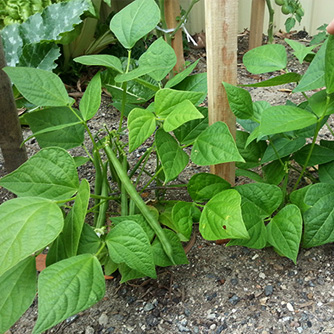
Bush green beans
The good news is that regardless of the type they all need the same growing conditions. Plant them in full sun with free draining, slightly alkaline soil and with protection from strong winds.
Before planting apply dolomite or lime to the soil to boost calcium levels and make the soil more alkaline. If the soil is very poor then add some manure or compost but don’t go overboard. Too much fertiliser will produce soft weak growth which is vulnerable to pest and disease problems.
Sow the seeds direct in the soil and water in with OCP eco-seaweed. Do not water again until the shoots appear, unless the soil becomes very dry. Excess watering in this early stage of germination will cause the seed to rot. Seedlings will take 1-2 weeks to emerge.
Be sure to know if you are planting climbing or bush beans. Climbing beans need to be planted against a trellis or fence for support or alternatively erect a simple tripod using 3x 2 metre long bamboo stakes. Push them into the ground and tie together at the top. Bush beans don’t require support.
Broad beans are self supporting but they can grow up to 1 metre high (depending on the variety) and are vulnerable to falling over in the wind. Plant as a block in a protected position or choose a dwarf variety.
Keep plants well watered as beans have a lot of surface roots which don’t like to dry out. Mulch around the plants to reduce weeds and aid water retention.
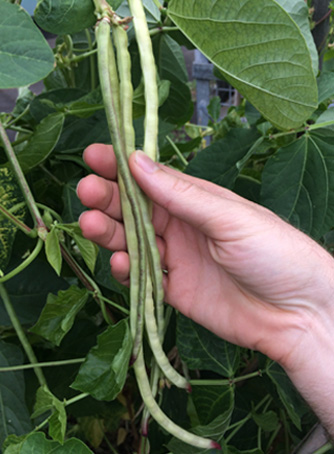
Long snake beans
Sowing Guide for Beans
Cool Season Beans (eg broad beans)
| Growing Zone | Sowing Time |
| Cool Zones | Autumn, Winter, Spring |
| Mediterranean Zones | Autumn, Winter |
| Warm & Temperate Frost Free Zones | Autumn, Winter |
| Tropical & Subtropical Zones | Autumn, Winter |
Warm Season Beans (eg French beans, snake beans, borlotti beans)
| Growing Zone | Sowing Time |
| Cool Zones | Spring, Summer |
| Mediterranean Zones | Spring, Summer |
| Warm & Temperate Frost Free Zones | Autumn, Spring, Summer |
| Tropical & Subtropical Zones | Autumn, Winter, Spring |
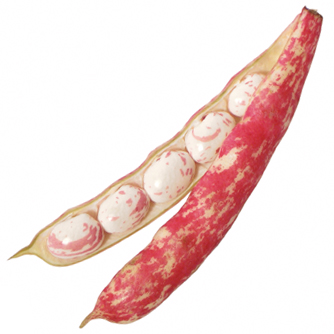
Interesting colours of the borlotti bean
Fertilising Beans
Beans are a type of legume and are able to produce their own nitrogen via special bacteria which live in their roots. As such they don’t require a lot of high nitrogen fertilisers. Simply apply OCP eco-aminogro and OCP eco-seaweed every 2-3 weeks to encourage bigger plants and better quality beans. Avoid any additional dressings of pelleted organic fertiliser or manure unless your soil is very poor quality.
Harvesting Beans
Most beans take 8-10 weeks until harvesting starts. Varieties which are to be eaten fresh should be picked regularly as the beans become hard and chewy the longer they stay on the plant. Varieties which will be dried and stored should be left on the plants until the beans have fully filled the pods and start to dry out.
Broad beans take longer to reach harvest time (about 18 weeks) but immature pods can be harvested at 10cm and eaten whole if you can’t wait that long!
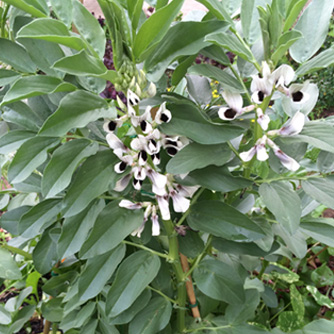
Broad beans in flower
Pests and Diseases for Beans
Beans have quite a few enemies when it comes to pest such as bean fly, whitefly, mites, aphids, caterpillars and more! Control whitefly with sprays of OCP eco-oil at the first sign of infestation, pick caterpillars off by hand or spray with OCP eco-caterpillar killer. For other pests use an organic insecticide.
Emerging seedlings are vulnerable to snail and slug damage. Scatter OCP eco-shield pellets for organic protection.
Various fungal diseases like rust, blights and leaf spots can also be a problem. Ensure plants are grown in enough sunlight with good airflow to minimise these problems. Regular foliar sprays of OCP eco-aminogro and OCP eco-seaweed will help to strengthen plants against diseases. If necessary spray with an organic fungicide.
Nematodes can also attack beans, particularly warm season plants, causing significant root damage and poor plant growth. Apply OCP eco-nemguard at planting time and every 4-6 weeks throughout the growing season.
Crop rotation is strongly recommended to further minimise many of these problems.
Other Problems
Sometimes beans will product lots of flowers but few pods. This can be due to lack of pollination (encourage more bees) or very hot weather causing flower failure.
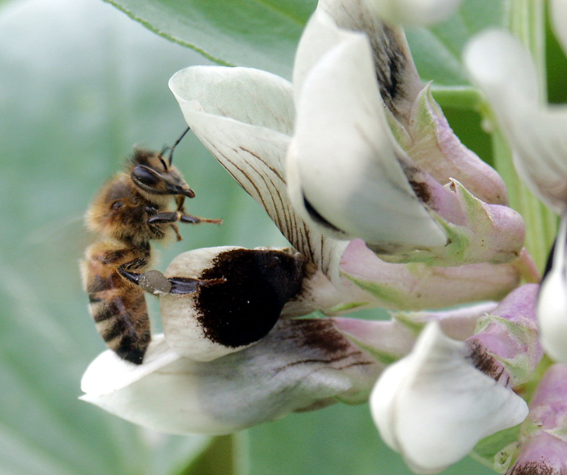
Bee pollinating broad bean flowers


